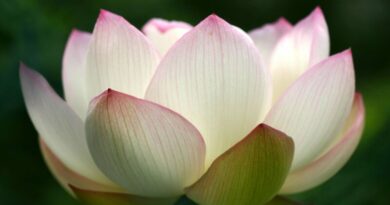STARTING OUT SMALL
MAIN CONTENT
Starting Out Small
A Collection of Talks for Beginning Meditators
by
Phra Ajaan Lee Dhammadharo
(Phra Suddhidhammaraṅsī Gambhīramedhācariya)
Translated from the Thai
by Ṭhānissaro Bhikkhu
(Geoffrey DeGraff)
EXPANDED EDITION, 2016
Copyright
copyright 2016 ṭhānissaro bhikkhu
This work is licensed under the Creative Commons Attribution-NonCommercial 4.0 Unported. To see a copy of this license visit http://creativecommons.org/licenses/by-nc/4.0/. “Commercial” shall mean any sale, whether for commercial or non-profit purposes or entities.
questions about this book may be addressed to
Metta Forest Monastery
Valley Center, CA 92082-1409
U.S.A.
additional resources
More Dhamma talks, books and translations by Thanissaro Bhikkhu are available to download in digital audio and various ebook formats at dhammatalks.org.
printed copy
A paperback copy of this book is available free of charge. To request one, write to: Book Request, Metta Forest Monastery, PO Box 1409, Valley Center, CA 92082 USA.
Contents
- Copyright
- Introduction
- Part I
- Brightness Within
- The Light of Discernment
- Clinging
- Letting Go
- Three Principles
- Three Strands of a Rope
- At the Gate of a Cattle-pen
- Starting Out Small
- Housework & Fieldwork
- Strength for the Journey
- Into Position
- Two Guardian Meditations
- Playing Host
- An Image of the Buddha
- Binoculars
- The Electric Heart
- Restraint of the Senses
- Snakes, Fires, & Thieves
- Enduring Principles
- Part II
- Merit
- On Target
- The Art of Letting Go
- At the Tip of Your Nose
- Part III
- Fragments
- Understanding the World & the Dhamma
- Inner Eyes
- Noble & True
- Recollection of Virtue
- Treating the Mind
- Dedication
Introduction
This is a work in progress. Eventually, I hope to make available in English a much larger collection of Ajaan Lee’s talks to add to the collections already available: Lessons in Samādhi, Food for Thought, Inner Strength, and The Skill of Release. But for the moment, in keeping with the title of the collection, I’d like to start out small.
The passages translated here had their beginnings in talks that Ajaan Lee gave to groups of people while they were meditating. In some cases, the people were his followers; in others, total strangers. In every case, Ajaan Lee found it necessary to cover the sorts of questions that occur to people new to meditation—Why meditate? How should I meditate? And why in that particular way?—and in his own style he provided not only straightforward answers to these questions but also vivid analogies, to help his listeners relate their meditation to familiar activities so that they would feel less intimidated by the uncharted areas of the minds they were trying to tame.
One aspect of Ajaan Lee’s teachings that might strike you as foreign is his analysis of the body into four properties: earth, fire, water, and wind. This mode of analysis dates back to the time of the Buddha, although Ajaan Lee develops it in a distinctive way. Think of this analysis, not as an attempt at biology or chemistry—the sciences we use to analyze the body from the outside—but as a way of analyzing how the body feels from the inside. This is an aspect of awareness that we often overlook and that, in English at least, we have a poor vocabulary for describing. As you gain through meditation a greater familiarity with this aspect of your awareness, you’ll come to see how useful Ajaan Lee’s method of analysis is.
The passages included here have taken a fairly circuitous route from Ajaan Lee’s mouth to your eyes. One of his followers—a nun, Mae Chii Arun Abhivaṇṇā—took notes during the talks, from which she later worked up reconstructed versions of what Ajaan Lee had said. Ajaan Lee had a chance to review and revise the reconstructions of the talks dated prior to 1957. As for the talks made after that year, Mae Chii Arun didn’t get around to making reconstructions until after Ajaan Lee’s death in 1961, and so these were printed without his input.
Although the talks make for great reading, they make for even better listening. If you meditate with a group of friends, try arranging for one member of the group to read a passage while the others are meditating. In that way, you can best recreate the context for which the talks were originally intended.
Ṭhānissaro Bhikkhu
OCTOBER, 1999
This expanded edition (see Part II) contains translations of two new talks that have never been published before—“Merit” and “On Target”—along with complete translations of the talks “The Art of Letting Go” and “At the Tip of Your Nose,” both of which were excerpted in Lessons in Samādhi. I hope to continue adding new talk-translations to this collection as time permits.
Ṭhānissaro Bhikkhu
JANUARY, 2016
This book has now been expanded with a second section (see Part III) of newly translated Dhamma talks, featuring one of Ajaan Lee’s longest recorded sermons, “Recollection of Virtue.”
Ṭhānissaro Bhikkhu
SEPTEMBER, 2016



